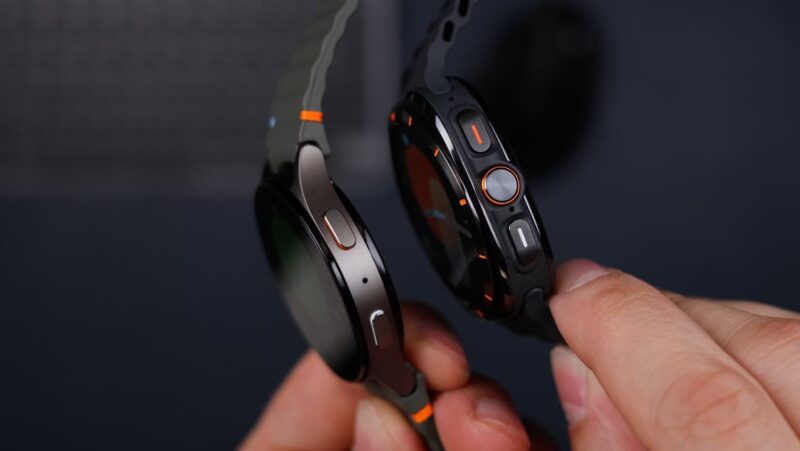In computer science, the term “24-bit” means a 24-bit word. It’s not about how many bits are in an operand but rather how much information is stored per unit of time. So what does it mean that music at this resolution has been around for decades?
24 bit/192khz vs 24 bit/96khz is a question that has been asked many times. The difference between these two specifications is the sampling rate, which is how many times per second an audio signal is sampled and converted to digital information. A higher sampling rate means more accurate representation of the original sound.
We earn money from qualifying purchases made on our website as an Amazon Associate.
We now live in a high-definition environment. But, if you can’t hear it, what’s the purpose of having a greater resolution?
That is why understanding Hi-Res 24bit 96kHz is critical.
So, what’s the big deal about high-resolution audio?
Hi-res audio is worth considering if you want the greatest digital music experience possible, or at the absolute least, greater sound quality than you’re accustomed to.
To put it another way, 96kHz stands for 96,000 samples per second and refers to the audio sampling rate. The size of the samples, or the number of bits utilized to represent the tone of the sample, is referred to as 24bit depth. It may be seen as a series of steps. If you just have two steps, for example, you may use silence or maximum volume, but the audio will be horrible. 24 bit, on the other hand, implies a lot more volume steps, which improves dynamics. The less bit depth you have, the fewer numbers you have to describe the audio, and hence the less defined it will be.
Let’s find out more.
What Does 24bit 96kHz Mean? (What Does 24bit 96khz Mean)
A phrase used to define digital audio resolution and sample rate is 24bit 96khz.
The amount of bits required to store each audio sample is indicated by the “24” in 24bit. The number of samples captured per second is denoted by the “96” in 96khz.
This combination yields a 192kHz resolution (or 192000 samples per second).
It’s suitable for professional applications like music recording and mastering since the high resolution allows for more information and clarity when recreating sound.
However, not all devices can playback files with a resolution of 24bit/96kHz.
The advantages of a high-resolution format may be minimal in certain instances.
Why do you want to use 24bit 96kHz?
The sound quality of 24bit 96kHz is much better. It’s ideal for making high-fidelity mixes, music, and other tasks.
Many people choose this bit rate because it is the most efficient method to transport audio files across devices without sacrificing quality due to storage space limitations.
This implies that when transmitting multi-channel songs from Pro Tools to Nuendo or Logic Pro X on Mac OSX, you should strive for 24bit 96kHz.
24 bit 96 kHz vs 24 bit 192 kHz
There are two primary formats for high-resolution audio: 24bit 96kHz and 24-bit 192kHz. The amount of bits employed to hold the audio data is the fundamental difference between these two formats.
With a greater bit rate, you obtain a better quality audio stream with more information and less distortion. This implies that if your audio system is good enough, you can hear things you couldn’t hear with a lower bit-rate signal.
So, which is the best format? That, of course, is dependent on your requirements and tastes. 24-bit 192khz is the way to go if you want the greatest possible quality and don’t mind sacrificing some file size.
If you’re seeking for a less expensive choice with equal quality but don’t want such high resolution, 24bit 96khz may be sufficient.
24 bit 96khz against 24 bit 48khz
When comparing 24-bit 96khz to 24-bit 48khz, there are a few things to consider.
1. Provided equipment
The kind of equipment you use will have a significant impact.
If you have a high-end audio interface that supports 24bit 96kHz resolution, you should utilize it as much as feasible.
If your equipment can only support 24-bit 48khz resolution, you’ll have to stay with that option.
Storage is number two.
Another factor to consider is the amount of storage space you have. In comparison to 24-bit 48khz resolution, 24-bit 96khz resolution takes up more space.
If you’re short on storage space, you may have to settle for a lesser resolution.
3. Your Personal Preference
Finally, the easiest approach to figure out which resolution is right for you is to listen to both options and determine which one sounds better.
Exporting your audio files in both resolutions and listening to them on several devices is a good idea (headsets, speakers, etc.). You may be amazed at how much a higher resolution makes a difference.
If you have a high-end audio interface that can handle 24bit 96kHz resolution, use it.
If not, stay to a resolution of 24-bit 48kHz. Most essential, before making a selection, always listen to the differences between the two resolutions.
Syba Sonic 96kHz 24bit
The Syba Sonic 24bit 96khz digital to analog converter allows you to bypass your computer’s sound card or headphone output.
As a result, you may use the USB interface to transfer a digital audio stream.
This implies it raises the quality of your sound to the utmost degree possible in the music context.
Headphones with 24-bit 96kHz
These headphones are a relatively recent addition to the market. They are still more costly than standard headphones, but they provide a superior listening experience.
These headphones offer an incredibly wide frequency range, using 24-bit 96kHz. This implies that they can pick up on even the tiniest sounds in music and reproduce them accurately.
It also implies that while recording or mixing down audio files at this level, there is no loss of quality. Because it hasn’t been reduced into a 16-bit 44-kHz format before being played back on your device.
Audiophiles have flocked to these headphones because of their incredible clarity and detail.
Audio Sample at 96kHz
The term “96khz Audio Sample” refers to a signal that has been sampled 96,000 times per second.
The 44.100 sampling rate used in CD-quality audio is much higher. There are two advantages to utilizing a greater sample rate.
It does two things: first, it improves the accuracy of the original waveform, and second, it decreases aliasing distortion.
When working with high-frequency sounds (over 20kHz), it’s critical to choose a sample rate that can correctly capture all of the sound’s characteristics.
When you choose a lower sample rate, some information is lost, resulting in audible artifacts like ringing or other unpleasant distortions.
These artifacts may be reduced or eliminated by increasing the sample rate.
The difference between 96khz and 192khz is significant.
For those unfamiliar with high-resolution audio, the difference between 96khz and 192khz might be confusing.
The fundamental difference between these two sampling rates is that 192khz may collect more data and provide better sound quality.
However, this improved quality comes at a cost – namely, larger file sizes.
As a result, whether or not to utilize 192khz is essentially a matter of personal choice and the amount of storage capacity available on your device.
192khz is the ideal option if you want the greatest possible audio quality. However, if you don’t mind losing some sound quality to conserve space on your hard drive, 96khz will suffice.
Is It Worth It To Use 24 Bit Audio?
Yes, 24-bit audio is well worth the investment. 24-bit files may be perfect for you if you want greater dynamic range and exact replication of your recordings’ original sound quality. It provides more audio quality and a superior user experience, making it an excellent choice.
Conclusion
Anyone who wants to get the most out of their music listening experience should understand Hi Res 24bit 96khz.
It allows you to hear all of your favorite songs’ subtleties and nuances, making them sound better than ever before.
If you haven’t already, give Hi-Res audio a try; you won’t be disappointed.
Watch This Video-
The “96khz vs 192khz” is a question that has been asked many times. The answer to the question is that 24bit, 96khz means that the music file is recorded at 24 bits and 96 kilohertz.
Frequently Asked Questions
Is 96kHz good quality?
A: 96kHz is the overall quality of sound, but it does not make sense for every situation. For example, if you are listening to music on a computer with headphones and theres a lot of noise in your living environment such as airplanes or sirens going off nearby, then 320kbps would be better than 96KHz because it will have less distortion due to the amount of environmental sounds. If you do decide that streaming at 96KHz makes more sense for what you want to listen to though, then feel free!
Is 24-bit A good quality?
A: 24-bit is a good quality.
Does 96kHz make a difference?
A: Absolutely. The higher the sampling rate, the better quality audio you will be able to hear when streaming or playing music on your PC.
Related Tags
- 44.1khz vs 96khz
- 24bit 96khz vs 24 bit 48khz
- what is 24-bit audio
- does 192khz make a difference
- 96khz vs 48khz






